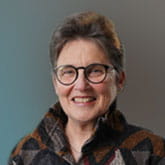As the Coronavirus (COVID-19) pandemic rapidly evolves, we are being bombarded with information regarding the disease and its spread across the globe. A Google search with the key word ‘Coronavirus’ yielded a staggering 9.4 billion results! It is therefore remarkable that a single article with compelling graphic animations has had such a significant impact on our understanding and adoption of social distancing as a defense against the spread of COVID-19 here in the U.S.
We refer here to an article published in the Washington Post on March 14th by the title of Why outbreaks like coronavirus spread exponentially, and how to “flatten the curve”. Soon after the article was published, former President Barack Obama tweeted the story to his 114 million followers, generating more than 122,000 retweets. Subsequently, the story became the most read in the website’s history.
In a simple and understandable way, the article presents four animated models that describe the spread of a hypothetical infectious disease which has similar characteristics to Coronavirus. People are described as small dots in motion changing color as they collide with infected dots, become infected themselves and finally recover. In the graphic presentation no one succumbs to the illness, so people are either well, ill, or recovered -- an optimistic view that allows the reader to take in the central message about the impact of social distancing on the rates of spreading the disease. The models are compelling. It is clear we must bend the curve -- we must reduce the spread of COVID-19. We are those “dots,” and the less we move around, the less we collide and interact with other dots, the less opportunity the virus will have to spread, it is as simple as that. It seems as if this article has shifted our behavior more than any calls for social distancing before it.
Take a few moments and read the article, take in the animations and pledge going forward to try to be one of the dots with very little motion, that is a commitment we have made at NextGen Healthcare. Together we can bend the curve.
Meet NextGen Ambient Assist, your new AI ally that generates a structured SOAP note in seconds from listening to the natural patient/provider conversation.
Read NowCategories
- Analytics and Reporting
- Regulatory Updates
- Artificial Intelligence (AI)
- Community Health
- COVID-19
- Dental
- Documentation
- Electronic Health Records
- Financial Management
- Health IT 101
- Industry news
- Integrated Care
- Interoperability
- Mobile EHR
- NextGen Advisors
- Patient Experience
- Practice Management
- Provider Experience
- Patient Engagement
- Population Health
- Revenue Cycle Management
- Small Practice
- Telehealth
- Value-based Care
